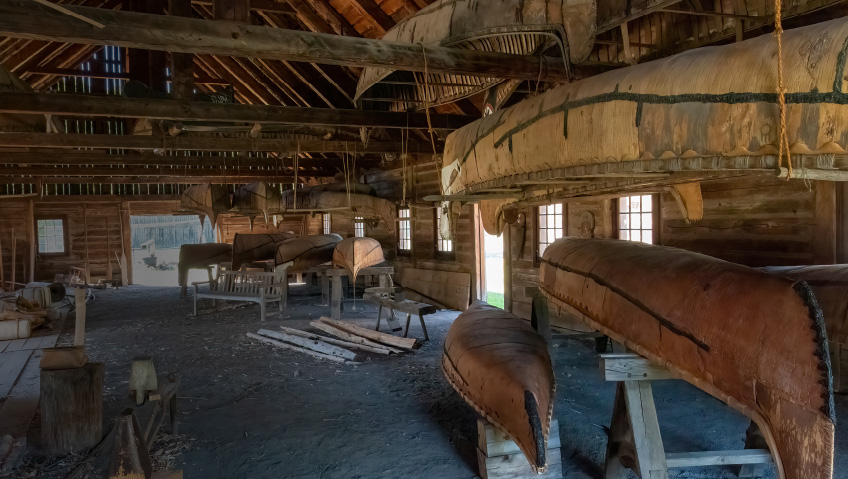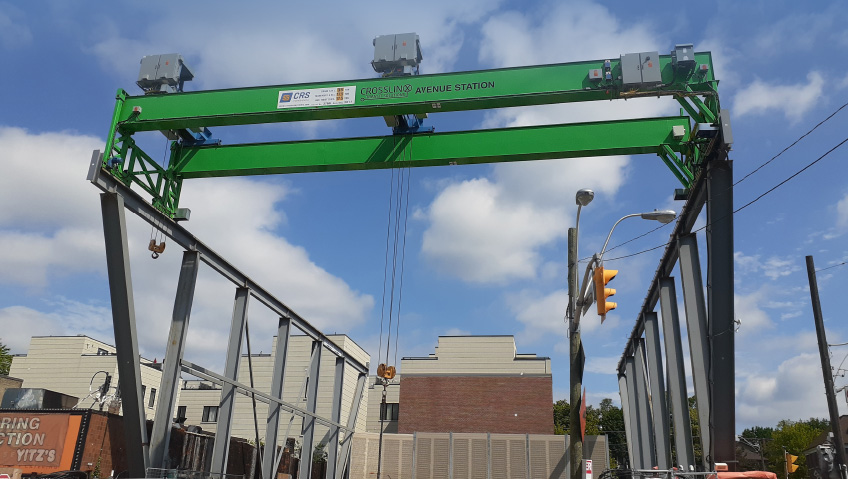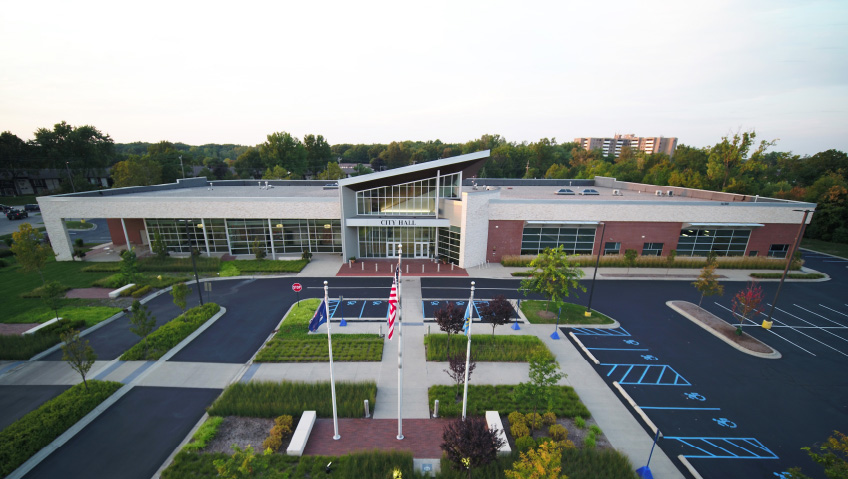Canada’s two million Indigenous people—First Nations, Métis, and Inuit, who make up about five percent of the total population—are reclaiming their rightful place at the economic table, a place from which they were excluded for far too long.
Over the past 30 years, that has been changing, and now we’re happy to celebrate the roughly 60,000 Indigenous-owned businesses in Canada, which in 2020 contributed almost $50 billion to the economy, with that number expected to continue to grow even further.
These businesses range in size and scope, from Atlas Films Inc., a video production company based in Moncton, New Brunswick, owned by Evar Simon, a member of Elsipogtog First Nation who has 20 years’ experience in the field, to a group of seven Cree and Anishinaabe First Nations forestry company entrepreneurs, who in June 2023 signed an historic forestry revenue-sharing agreement with the Manitoba government.
Entrepreneurial Indigenous women are also making their mark. Jenn Harper, for example, who is Anishinaabe, a member of Northwest Angle #33 First Nation in Kenora, and now based in St. Catherines, Ontario, is the CEO of Cheekbone Beauty, a cosmetics line. Her products, which boast sustainability as a key feature, are sold through Sephora stores, a high-end cosmetics retailer, including one in the Toronto Eaton Centre, and at JC Penney in the U.S.
Teara Fraser, who is Métis, is another prime example of entrepreneurship. In 2018 she founded Iskwew Air, with two planes based at the Vancouver International Airport offering charter and cargo services. Since 2022, she and her small team have also been offering scheduled flights to Qualicum Beach Airport on Vancouver Island.
400 years ago
There’s a certain irony in reporting as “news” that Indigenous people are coming into their own as entrepreneurs, considering that European explorers and missionaries had noted in the 1600s how the Indigenous people, who had lived here for over 10,000 years, had a sophisticated trade system in place, transporting goods along coastal and river routes.
In fact, were it not for Indigenous people’s innate understanding of trade; their knowledge of the waterways and portage routes; their expertise in hunting and trapping; and their skills at building canoes and kayaks, sleds, toboggans, and snowshoes, the lucrative fur trade with Europe, which laid the economic foundations of the land that would become Canada, would not have been possible.
But the critical role Indigenous people played in the economy ended abruptly in the post-Confederation and railroad era, when the basis of the economy switched to large-scale agriculture, including wheat growing and cattle ranching, mining, and forestry. Further to that, the Indian Act of 1876 restricted the movements of First Nations people off reserves, and that restricted mobility put limitations on what types of goods Indigenous people could sell at market and where they could find employment. Since they didn’t own property, they were unable to secure business loans, just one factor that contributed to enormous economic disparity.
It would be 120 years before the 1996 Royal Commission on Aboriginal People recognized that the systemic discrimination resulting from the Indian Act and its various amendments had continued to be a barrier to employment and entrepreneurship, resulting in poverty, geographic isolation, and lack of education, while severely impacting the well-being of Indigenous communities. With the publication of the Royal Commission’s report came a glimmer of hope that such discrimination might end.
But it wasn’t until 2021, 400 years after Europeans first set foot in North America, that the Truth and Reconciliation Commission’s Article 92 specifically called on the corporate sector to adopt the UN Declaration on the Rights of Indigenous Peoples as a framework and apply its principles, norms, and standards to corporate policy and operational activities involving Indigenous peoples and their lands and resources. With it comes an explicit recognition that Indigenous people are entitled to a voice in the shaping of economic policy.
An Indigenous entrepreneurial renaissance
Today we’re happy to celebrate the thousands of Indigenous-owned and operated businesses in Canada, with programs and organizations that support them, including the First Nations Bank of Canada (FNBC), a majority Indigenous-owned and controlled financial institution focused on providing financial services to the Indigenous marketplace. But this renaissance was a long time coming.
The roots of the modern era of Indigenous entrepreneurship go back to 1948, when Toronto artist and writer James Houston travelled in the eastern Arctic and was presented with gifts of small Inuit sculptures carved from bone, ivory, and soapstone, which he showed to the Canadian Handicrafts Guild in Montreal.
The members were so impressed by the fine work that they suggested he encourage the Inuit artists, whose nomadic hunting and trapping lifestyle was collapsing, to develop a large-scale carving enterprise. For the next 12 years Houston lived on the southern tip of Baffin Island, in a community then known as Cape Dorset (since 2020 known as Kinngait, Nunavut), where he helped develop an art centre and cultural incubator, a space where Inuit carvers could create larger sculptures and learn printmaking skills.
More than 70 years later, museum-quality soapstone carvings of narwhals, polar bears, seals, Arctic birds, traditional hunters and drummers, and the iconic inukshuks, along with limited edition fine art prints, are prized by international collectors and fetch prices upwards of S1000, with some pieces selling for over $25,000 on online galleries and shops such as the Inuit Sculpture Art Gallery and Made in Canada Gifts, which also maintains a storefront in Ottawa.
While enormously successful, the Cape Dorset/Kinngait venture remained an anomaly. Other than a few Indigenous entrepreneurs operating small businesses serving the needs of reservations, the words “Indigenous” and “entrepreneurship” were not likely to appear in the same sentence.
But that began to change when the Canadian Council for Aboriginal Business (CCAB), headquartered in Toronto, was formed in 1984 with a mission to foster sustainable business relationships between First Nations, Métis, and Inuit people and Canadian business.
In 1982, Murray B. Koffler, the founder of Shoppers Drug Mart and co-founder of the Four Seasons Hotel and Resort, had a chance encounter with some First Nations people sheltering in the basement of a partly constructed hotel he was inspecting in Calgary, and was shocked by their situation.
Previously, Koffler, like the rest of corporate Canada, had believed the government was providing for the needs of Indigenous people, and therefore he and his associates bore no responsibility to help them participate in mainstream commerce. That encounter opened Koffler’s eyes and the eyes of some powerful political and corporate friends, including Paul Martin and Edward Bronfman, which led to the formation of the non-profit organization to bridge the gap between corporate and Indigenous communities.
Programs offered by the CCAB include Tools & Financing for Aboriginal Business (TFAB); TFAB Grants and Funding Opportunities; Progressive Aboriginal Relations, a program which encourages non-Indigenous businesses to partner with First Nations, Métis, or Inuit communities; Supply Change, a procurement strategy which generates revenue for Indigenous businesses formed through relationships with corporations and governments; and the Indigenous Business Defence Sector Accelerator Program, which creates opportunities for Indigenous businesses in Canada to engage with defence suppliers.
In addition, the CCAB sponsors business forums and awards dinners across Canada, publishes Aboriginal Business, a quarterly magazine, and distributes regular electronic newsletters.
Following the initial success of the CCAB, the National Indigenous Economic Development Board (NIEDB) was established in 1990 with the purpose of advising government on strategies and programs to promote economic development within Indigenous communities.
Then, in 1996, the community took more direct control of their economic future, with the formation of the National Aboriginal Capital Corporations Association (NACCA), created by a collective group of Indigenous financial institutions to develop financial products and services for Indigenous communities, including a micro-loan program, the Women Entrepreneurship Loan Fund, launched in 2022. Through its network of 50 community-based and Indigenous-controlled Aboriginal Financial Institutions (AFIs) NACCA says it has provided $3 billion in loans to 50,000 small and medium-sized businesses owned by First Nations, Métis, and Inuit people since its founding.
In addition, the Government of Canada maintains the Indigenous Business Directory, designed to assist majority-Indigenous-owned businesses and to support them in pursuit of business opportunities, including federal procurement. This directory increases visibility and opens the door to compete for federal government contracts or to work on Crown projects.
Just like non-Indigenous enterprises, Indigenous-owned enterprises are diverse and span every industry sector and market and all thirteen provinces and territories. They include construction; primary sectors such as agriculture, forestry, fishing, and hunting; mining; oil and gas; and service sectors such as education, scientific, technical, health and social services, and tourism.
A key enterprise that unites Indigenous people across the country is the Aboriginal People’s Television Network (APTN), launched in 2000 in Winnipeg, Manitoba and the first and only national Indigenous broadcaster in the world. At first it only operated one day a week, but today operates on a full schedule, covering news, creating documentaries and podcasts, and receiving awards, including the prestigious Michener Award.
Indigenous tourism
According to the Indigenous Tourism Association of Canada (ITAC), based in Vancouver, British Columbia and with branches in every province, Indigenous tourism, one of the fastest growing tourism sectors, accounts for more than 1,800 businesses, employs over 39,000 people, and contributed an estimated $1.86 billion to the GDP prior to the pandemic. Although Indigenous tourism—like the sector as a whole—suffered setbacks during the pandemic, it has since rallied, with new experiences opening in 2023.
Among these are the second location of Vancouver’s only Indigenous-owned and operated restaurant, Salmon n’ Bannock, which opened at the Vancouver International Airport and, on the other side of the country, in Happy Valley-Goose Bay, Newfoundland and Labrador, Mamattuk, a restaurant, lounge, and coffee bar celebrating local ingredients from the area.
Quebec’s 4-Star boutique Hôtel-Musée Premières Nations, with architecture inspired by longhouses and surrounded by gardens and hiking trails, is just five minutes away from Onhwa’ Lumina. There, tourists follow a 1.2-km illuminated, multimedia nature trail which transports them to the world of the Huron-Wendat Nation and where, according to the ITAC website, “they can explore themes such as the cycle of life, the passing down of knowledge, and the shared relationships between all living things.”
Meanwhile, there are Indigenous businesses across the country catering to environmentally conscious and culturally aware tourists who are seeking authentic experiences including guided wilderness tours, such as the six-hour Coastal Rainforest Safari tour out of Port Hardy on the northern tip of Vancouver Island, which showcases the abundant wildlife along with an opportunity to participate in a salmon spawning program while learning about the culture of the Kwakwaka’wakw People.
On Manitoulin Island, Ontario, Wikwemikong Tourist Experiences offer a variety of tours, including The Unceded Journey tour, dealing with Indigenous history and Indigenous Culinary Experiences. Here, visitors prepare a meal alongside a guide which could include fresh trout from Georgian Bay cooked over a cedar plank, seasoned with sage, mint, and sumac, glazed with maple syrup, and served with wild rice, or alternatively, stone-cooked venison, served with wild foraged vegetables and mushrooms. Other tours offer opportunities to learn about medicinal plants, enjoy a moonlit canoe journey, and shop at the gift shop which features artwork, crafts, jewellery, and clothing, all made by local artists and artisans.
Also under the tourism umbrella are some major events, such the International Powwow, being held again this year in Red Deer, Alberta in October, and the 10th North American Indigenous Games, held this past July in the Halifax, Nova Scotia region. The Games brought in 5,000 young athletes from 758 first nations in Canada and the U.S. and featured 16 different sports events, including three traditional ones, Canoe/Kayak, Lacrosse, and 3D Archery, alongside sports such as badminton, baseball, and basketball.
The Games, which received $8.3 million in funding from the Sport Canada Hosting Program and $700,000 from the Atlantic Canada Opportunities Agency (ACOA), were predicted to have an economic spin-off for the region of more than $24 million, which means that Indigenous business benefits everyone, according to an article published by the Halifax Chamber of Commerce on June 1, 2023.
Indigenomics
Carol Anne Hilton, a Hesquiaht woman of Nuu-chah-nulth descent and CEO and founder of the Indigenomics Institute based in Victoria, British Columbia, where she acts as an advisor to businesses, governments, and First Nations, said she sees “a powerful explosion of Indigenous entrepreneurship taking place all over Canada. It’s amazing to watch.”
As the author of Indigenomics: Taking a Seat at the Economic Table told the CBC, “The Indigenous economy could quickly surge to $100 billion a year in Canada if governments and corporations make changes to their polices and business practices and engage with First Nations companies in such areas as procurement, trade, investment, and social finance.”
As Hilton said, “Entrepreneurs play a major role in the Indigenous economy not only by providing growth opportunities, but also by creating a new cultural narrative,” one that everyone can learn from and appreciate.






